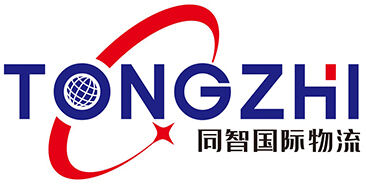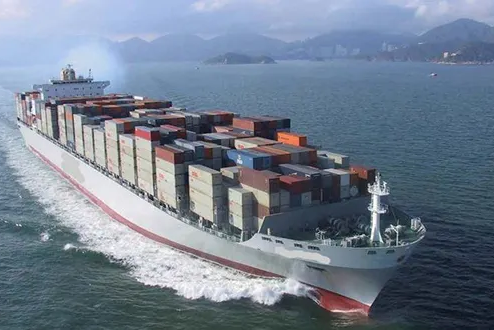コンテナ輸送は、世界貿易の基幹であり、世界中の商品を効率的かつ安全に運ぶことを可能にします。国際貿易の需要が増大する中、企業は自社の物流業務を最適化するために、コンテナ輸送に関する詳細を理解する必要があります。この記事では、コンテナ輸送の効率を最大限に引き出すためのベストプラクティスと重要な考慮事項について説明します。
コンテナ輸送の理解
コンテナ輸送とは、大型の標準化されたコンテナに貨物を積んで輸送する方法です。これらのコンテナはさまざまなサイズがあり、最も一般的なのは20フィートと40フィートのコンテナです。標準化により、船、トラック、列車間でのスムーズな転送が可能となり、非常に-versatileで効率的な輸送手段となります。
コンテナ輸送の主な利点
効率性: コンテナは取り扱いやすく、積み重ねやすいように設計されており、これにより港での積み卸し作業が高速化されます。この効率性はより速い輸送時間とコスト削減につながります。
安全性: コンテナで輸送される貨物は、損傷や盗難に対してより抵抗があります。コンテナの頑丈な構造は、天候や潜在的な窃盗から優れた保護を提供します。
コスト効果: コンテナ輸送は、特に長距離の国際輸送において他の輸送手段よりも一般的にコスト効果が高いです。複数の貨物を1つのコンテナにまとめることでさらにコストが削減されます。
汎用性: コンテナは、原材料や機械から腐敗しやすい物品や完成品まで、さまざまな商品を運ぶことができます。冷凍コンテナ(リーファー)などの専用コンテナは、温度管理などの特定のニーズに対応しています。
コンテナ輸送のベストプラクティス
適切なコンテナタイプを選ぶ
貨物の安全で効率的な輸送を確保するために、適切なコンテナタイプを選択することが重要です。標準のドライコンテナはほとんどの貨物に適していますが、企業は特定のニーズに対応するための専用コンテナも考慮すべきです:
冷凍コンテナ(リーファー): 温度管理が必要な腐敗しやすい貨物用。
オープントップコンテナ: 標準コンテナには収まらない大型貨物用。
フラットラックコンテナ: 機械や車両などの重くて嵩張る物品用。
コンテナ利用の最適化
コンテナ内の利用可能なスペースを最大限に活用することで、輸送コストを大幅に削減できます。企業は次のことを考慮すべきです:
商品を適切に梱包し積み重ねる: 輸送中に移動しないように、商品をしっかりと梱包してください。
パレットとスカッドを使用する: 取り扱いを簡単にしてスペースを効率的に使用します。
重量のバランスを取る: 穏定性を維持し、損傷を防ぐために重量を均等に分布させます。
高度な追跡システムを導入する
貨物のリアルタイム追跡と監視は、輸送プロセス全体で貴重な洞察を提供し、可視性を高めます。高度な追跡システムでは次の機能が提供されます:
リアルタイムの位置情報更新: 企業が貨物の位置と状態について常に最新情報を得られるようにします。
状態監視: 温度に敏感な商品が所定の範囲内に留まっていることを確認します。
予測分析: 潜在的な遅延を予測し、より速い配達のためにルートを最適化します。
規制への適合を確保する
国際輸送規制への準拠は、遅延や罰金を避けるために重要です。企業は次の行動を取るべきです:
貿易規制についての情報収集: 各目的地における輸出入法や税関要件に最新の状態で対応する。
正確な書類の準備: 輸送指示書、原産地証明書、税関申告書などの必要な書類が正しく記入され、期限内に提出されていることを確認する。
経験豊富な税関代理店と協力する: 税関通過を円滑にし、コンプライアンス問題のリスクを最小限に抑える。
効率向上のための技術活用
コンテナ船積み業務を最適化するために、技術が重要な役割を果たします。企業は次を採用すべきです:
船積み管理ソフトウェア: 予約、書類作成、追跡プロセスを効率化する。
自動貨物取扱システム: 港での積み下ろし作業を加速させる。
ブロックチェーン技術: 取引および移動の不変の記録を提供することで、サプライチェーンにおける透明性とセキュリティを強化する。
コンテナ船積みにおける重要な考慮事項
コスト管理
配送コストは企業の利益に大幅な影響を与えることがあります。コストを管理するための主要な戦略には以下が含まれます:
出荷の統合: 複数の出荷を一つのコンテナにまとめ、規模の経済効果を得る。
契約の交渉: 航路会社や貨物転送業者と有利な料金および条件を確保する。
ルートの最適化: 最も効率的で費用対効果の高いルートを選択し、輸送時間を最小限に抑えて燃料消費を削減する。
リスク管理
コンテナ船積みに関連するリスクを管理することは、商品の安全で確実な配達を確保するために重要です。以下の点を考慮してください:
保険カバレッジ: 損傷、盗難、または遅延による潜在的な
損失から保護する。
緊急計画: 港湾ストライキや自然災害などの予期せぬ中断に対処するための計画を立てる。
定期監査: 配送プロセスやパートナーの監査を行い、リスクを特定して軽減する。
持続可能性の実践
持続可能性はグローバル物流においてますます重要になっています。企業は次のようなエコフレンドリーな慣行を採用できます:
燃料効率の高い船を使用する:現代的な、燃料効率の良い船を備えた船会社を選んで、二酸化炭素排出量を削減します。
グリーン包装ソリューションの実施:環境への影響を最小限に抑えるために、再生可能で分解可能な包装材料を使用します。
二酸化炭素排出量のオフセット:輸送活動の環境負荷を中和するために、二酸化炭素オフセットプログラムに参加します。
結論
コンテナ輸送は国際貿易の重要な要素であり、効率性、安全性、コスト効果を提供します。適切なコンテナタイプの選択、コンテナ利用の最適化、先進的な追跡システムの活用、規制遵守の確保、技術の採用などのベストプラクティスを実施することで、企業はコンテナ輸送の利点を最大限に発揮できます。さらに、コスト管理、リスク軽減、持続可能性の取り組みが、グローバル市場での競争優位性を維持するために重要です。







































